We use information collected through cookies and similar technologies to improve your experience on our site, analyze how you use it and for marketing purposes.
Your privacy settings
We and our partners use information collected through cookies and similar technologies to improve your experience on our site, analyze how you use it and for marketing purposes. Because we respect your right to privacy, you can choose not to allow some types of cookies. However, blocking some types of cookies may impact your experience of the site and the services we are able to offer. In some cases, data obtained from cookies is shared with third parties for analytics or marketing reasons. You can exercise your right to opt-out of that sharing at any time by disabling cookies.
Manage Consent Preferences
Necessary
Always ON
These cookies and scripts are necessary for the website to function and cannot be switched off. They are usually only set in response to actions made by you which amount to a request for services, such as setting your privacy preferences, logging in or filling in forms. You can set your browser to block oralert you about these cookies, but some parts of the site will not then work. These cookies do not store any personally identifiable information.
Analytics
These cookies and scripts allow us to count visits and traffic sources, so we can measure and improve the performance of our site. They help us know which pages are the most and least popular and see how visitors move around the site. All information these cookies collect is aggregated and therefore anonymous. If you do not allow these cookies and scripts, we will not know when you have visited our site.
Embedded Videos
These cookies and scripts may be set through our site by external video hosting services likeYouTube or Vimeo. They may be used to deliver video content on our website. It's possible for the video provider to build a profile of your interests and show you relevant adverts on this or other websites. They do not directly store personal information, but are based on uniquely identifying your browser and internet device. If you do not allow these cookies or scripts it is possible that embedded video will not function as expected.
Google Fonts
Google Fonts is a font embedding service library. Google Fonts are stored on Google's CDN. The Google Fonts API is designed to limit the collection, storage, and use of end-user data to only what is needed to serve fonts efficiently. Use of Google Fonts API is unauthenticated. No cookies are sent by website visitors to the Google Fonts API. Requests to the Google Fonts API are made to resource-specific domains, such as fonts.googleapis.com or fonts.gstatic.com. This means your font requests are separate from and don't contain any credentials you send to google.com while using other Google services that are authenticated, such as Gmail.
Marketing
These cookies and scripts may be set through our site by our advertising partners. They may be used by those companies to build a profile of your interests and show you relevant adverts on other sites. They do not store directly personal information, but are based on uniquely identifying your browser and internet device. If you do not allow these cookies and scripts, you will experience less targeted advertising.
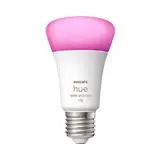
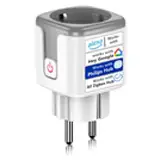
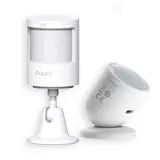
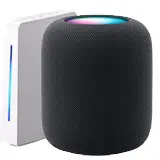
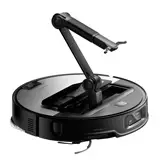

Motion Sensors for Kids: How to Ensure Their Safety?
Motion sensors have become ubiquitous. We find them in toys, nightlights, and home security systems. For children, these devices can be fascinating and helpful. But how do we ensure their safe use?
Motion Sensors for Kids: A Guide for Parents
This article explores how to safely choose, install, and use motion sensors with your children. We'll cover everything from selecting the right sensor to educating them about how it works and potential risks.
What are motion sensors and how do they work?
A motion sensor detects movement in a specific area. There are different types of sensors, but the most common use passive infrared (PIR) or microwave technology. PIR sensors detect changes in infrared radiation emitted by objects, including people. Microwave sensors emit radio waves and detect changes in their reflection when an object moves within their range.
These sensors are used to activate lights, alarms, or even toys. Their versatility makes them very popular in homes with children.
Benefits of Motion Sensors for Children
Motion sensors can offer several benefits for children:
Choosing the Right Motion Sensor for Kids
Not all motion sensors are created equal. It's crucial to choose one that's appropriate for the child's age and intended use. When selecting a motion sensor, consider the following factors:
Types of motion sensors
Security considerations
Safety should be the top priority when choosing a motion sensor for children:
Common uses of motion sensors for kids: safe examples
Motion sensors can be integrated into different aspects of a child's life. Here are some examples of safe uses:
Secure Installation of Motion Sensors
Proper installation is critical to ensure the safety and effectiveness of the motion sensor. Follow these steps: Make sure to place the sensor in a location where it can detect motion optimally, avoiding obstacles that may block its field of view. In addition, it is important to consider the height at which it is installed, as this influences its performance. By following these recommendations, you will be able to enjoy the multiple benefits of motion sensorsThe main benefits of these products are improved home security and reduced energy consumption.
Example Table: Secure Installation According to Sensor Type
Education and supervision: teaching children about motion sensors
It's important to educate children on how motion sensors work and how to interact with them safely. Explain the following:
Supervision is crucial, especially with young children. Make sure they understand the rules and don't play with the motion sensor.
Potential Risks and How to Mitigate Them
While motion sensors are generally safe, there are some potential risks:
Recommendations and best practices
Here are some recommendations and best practices to ensure children's safety when using motion sensors:
Concrete examples of best practices
Conclusion: Safety first when using motion sensors with children
Motion sensors can be useful and fun tools for kids. However, prioritizing safety when choosing, installing, and using these devices is crucial. By choosing the right type of sensor, installing it correctly, educating children on how it works, and supervising their use, you can enjoy the benefits of motion-sensing technology without compromising your children's safety.
Now that you know the best practices, share this article with other parents and caregivers so they can also ensure children's safety when using motion sensors. Do you have any experience with motion sensors and children? Leave a comment below!
Related Posts
Baby Sleep Monitors: What Technology Is Best?
Worried about the quality of your baby's sleep? You're not alone! Baby sleep monitors have become an essential accessory for many parents. But with so many options available, how do you know which technology is best for you and your little one? This article will guide you through the maze of sleep monitors ...
How to schedule routines to help children with their schedule
Feeling like you're juggling plates, trying to keep your kids' schedules straight? Breathe! You're not alone. Family life can be chaotic, but a good routine can be your secret superpower. Creating effective routines for kids isn't just about organization; it's about providing them with security, predictability, and a foundation…
Smart night lighting for kids' rooms
Bedtime can be a challenge, especially with young children. Creating a calm and safe environment is crucial for restful sleep. A powerful tool to achieve this is smart night lighting for children's rooms. We're no longer talking about a simple dim light, but a system that adapts to the needs…
Baby monitors: what are the best options?
Welcome to the world of baby monitors. Expecting a baby? Or do you already have one at home and are looking for the peace of mind of being able to check on your little one from anywhere? Then you're in the right place. Baby monitors have evolved a lot. They're no longer just devices…